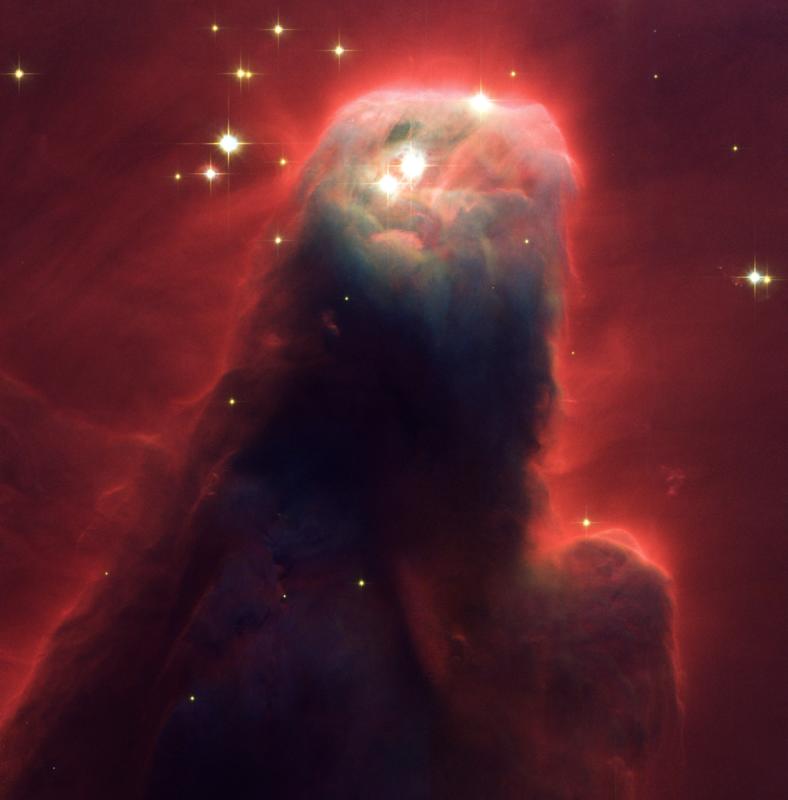A Theoretical Link Found Between Radio Jets and Gamma Rays
By BellatrixScientists from the Max Plank Institute for Radio Astronomy in Bonn Germany using NASA’s Fermi Gamma Ray Space Telescope and the world’s largest radio telescope array have solidified a theoretical link between radio jets coming from the center of active galaxies and gamma ray bursts. This is a fine demonstration and use of new technology combined with an innovative use of existing technology.
Active galaxies are extremely bright galaxies which emitted oppositely directed jets of charged particles from their centers traveling near the speed of light. Some, called Blazars, are especially bright because their jets are orientated along our line of sight. These jets glow brightly in the radio part of the spectrum and in the 90’s it was hinted with the Chandra X-ray Observatory that they might emit in the higher energy parts of the spectrum as well. Astronomers believe these jets arise from matter that is falling into the central massive black holes of the galaxies, but the exact processes behind them is not well understood; which makes them the object of much study.
Now the Fermi telescope uses it’s Large Area Telescope, LAT, to scan the entire sky every 3 hours getting snapshots of the gamma ray bursts throughout the sky and monitor flares. Gamma ray bursts are the highest energy form of light below cosmic rays, and the origins of these gamma ray bursts is still undetermined; the objective of Fermi is to help clarify these origins.
The new study was part of the MOJAVE program, which is a long-term study of the jets form active galaxies using primarily the VLBA. The VLBA is the National Science Foundation’s Very Long Baseline Array, a set of 10 radio telescopes located from Hawaii to the Virgin Islands and operated by the National Radio Astronomy Observatory in New Mexico. Signals from these 10 different telescopes are combined and the array acts like a single enormous radio dish more than 8,500 kilometers across. The VLBA can resolve details about a million times smaller than Fermi and50 times smaller than any optical telescope.
Astronomers combined data from the VLBA and LAT. Active galaxies detected in the LAT’s first few months of operations generally possess brighter and more compact radio jets than galaxies the LAT did not see. Moreover, an active galaxy’s radio jets tend to be brighter in the months following any gamma-ray flares observed by the LAT. A correlation was also found between active galaxies with the brightest gamma ray emission and those with the fastest jets.
The scientists were also able to use this data to study a phenomenon known as Doppler boosting. Doppler boosting makes radio-emitting blobs look brighter and appear to move faster than the speed of light due to the angle at which it is viewed and the fact the speed of the particles is close to the speed of light. The VLBA data shows that the bigger the Doppler boost seen in a radio jet, the more likely it is that Fermi recorded it as a gamma ray source. Also, many objects found by Fermi to be extreme in gamma rays are broadcasting strong bursts of radio emission at the same time.
All of this data points to the conclusion that the portion of an active galaxy’s radio jet closest to the galaxy’s center is also the source of the gamma rays. These findings show us a very interesting and before unknown link between two “sides” of one object and possibly one process. This may bring astronomers one-step closer to solving two very large mysteries: the processes behind the jets and the exact processes or origins of gamma ray bursts. It could turn out to be quite nice and convenient if both questions could have the same answer, or an answer that comes from the same place. This new finding is also a demonstration of the use of the new technology of Fermi the space telescope that was designed just to study gamma ray bursts, a first of its kind, and the technology behind the VLBA, using standard radio telescopes in a new way to improve their usefulness.
